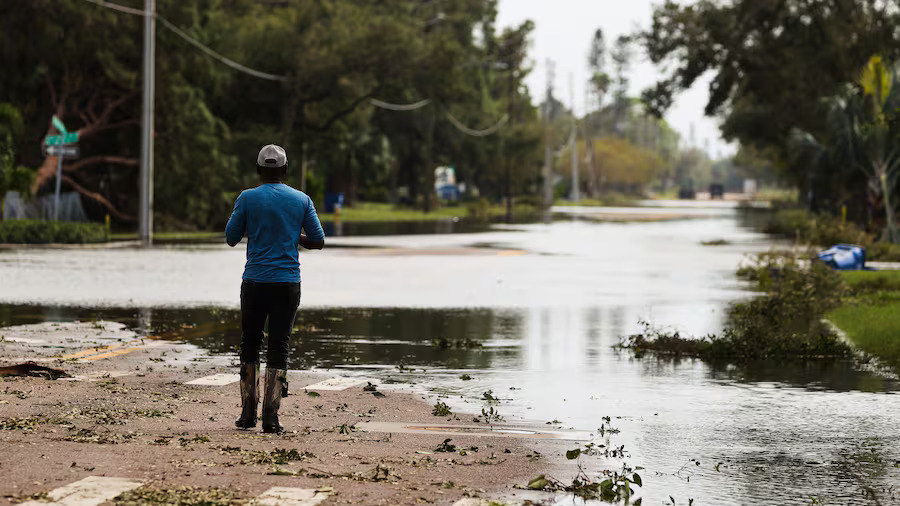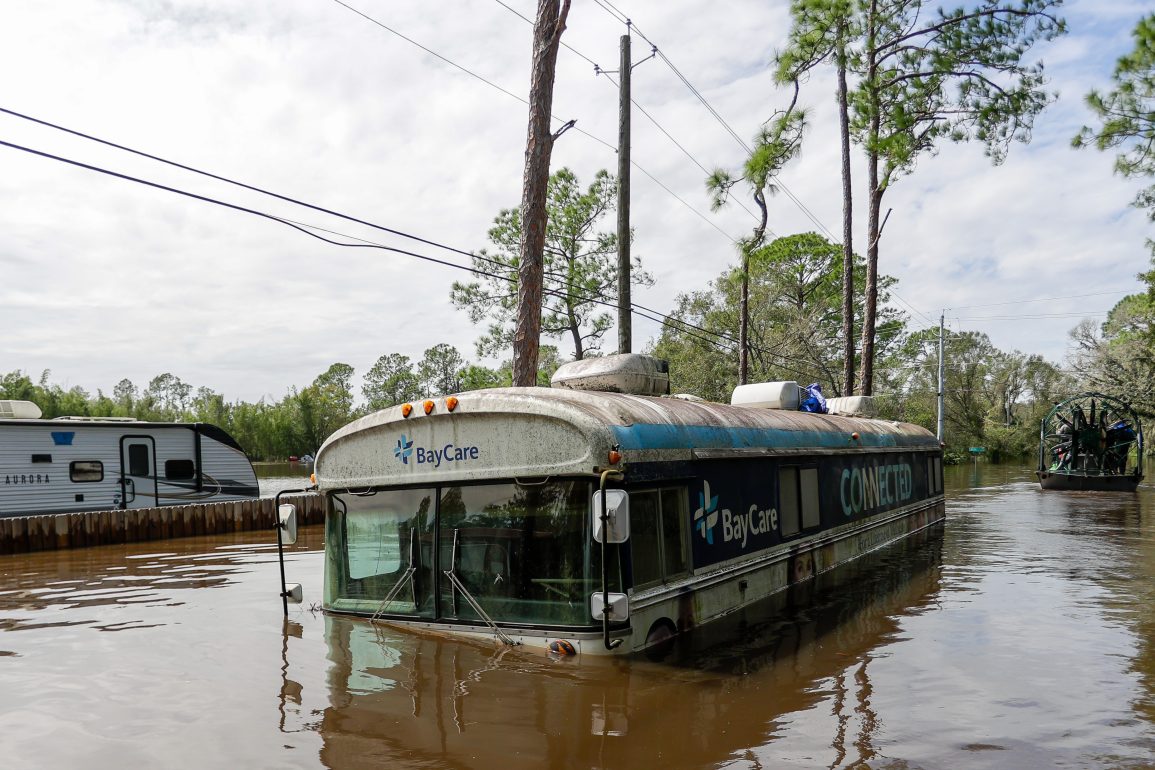The Tampa Bay area is facing a critical environmental crisis as it contends with severe pollution from two consecutive hurricanes, Helene and Milton. This large open water estuary, home to millions, has seen its stormwater infrastructure overwhelmed, leaving communities to grapple with contamination just as they were beginning to recover from the previous storm.
The relentless nature of these storms has compounded the pollution crisis, demonstrating significant challenges in managing stormwater in a rapidly expanding urban region.
As residents started the cleanup process from Hurricane Helene, they were caught off guard by the arrival of Hurricane Milton, which brought heavy rainfall that disrupted recovery efforts. The storm stirred up previously settled floodwaters and debris, releasing foul odors from sewage spills that had just begun to fade. Local authorities reported over 160 spills and pollution events associated with Milton, emphasizing systemic issues in managing stormwater and wastewater.
The extent of pollution from Hurricane Milton is staggering, with preliminary estimates suggesting that approximately 68 million gallons of contaminated water have been released across seven counties. This figure likely underrepresents the true volume, as wastewater management teams continue to assess the situation. More than 30 waterways, including Tampa Bay and Lake Seminole, have been impacted, reflecting the profound environmental damage caused by these storms.
Numerous specific pollution incidents highlight the severity of the situation. For example, in Bradenton, the city discharged an estimated 20 million gallons of partially treated wastewater into the Manatee River just as Milton approached. This was compounded by a subsequent release of another 18 million gallons due to a shortage of necessary chemicals.

Similarly, Tampa’s wastewater facility reported nearly 3 million gallons of untreated water spilling into the bay, while St. Petersburg experienced significant sewer overflows, resulting in approximately 5.9 million gallons of wastewater being released into various local waterways.
The health implications of these sewage spills are alarming. Experts are particularly concerned about the presence of fecal bacteria, harmful algal blooms, and pharmaceuticals that may persist in contaminated waters. The volume of wastewater released during Milton has surpassed that of previous storms, signaling an urgent need for infrastructure upgrades to better cope with such severe weather events.
Post-storm water quality assessments revealed alarming levels of fecal contamination in several local waterways. Out of nine tested locations, only one had acceptable levels of bacteria, while the others exhibited significant pollution. This raised health concerns and prompted nonprofit organizations to ramp up their water testing efforts, stepping in where state agencies had not monitored certain areas since September.
Environmental advocates stress that these recurring pollution incidents underscore the urgent need to modernize Florida’s aging infrastructure. The majority of Florida’s beaches have been found to test positive for unsafe fecal bacteria, indicating that the current waste management systems are inadequate. There are increasing calls for comprehensive upgrades to the infrastructure, particularly in light of the frequent pollution events linked to severe weather.
In addition to sewage spills, other pollutants such as gasoline from sunken boats and chemicals from construction debris have also contributed to the contamination of Tampa Bay. Reports of leaking vessels following the storms, along with runoff from industrial facilities, further complicate recovery efforts and pose a significant threat to local ecosystems. The combination of these pollutants adds to the environmental burden, making recovery from the storms even more challenging.
The situation is exacerbated by the potential for harmful algal blooms, like red tide, which thrive in nutrient-rich waters. Scientists are closely monitoring these blooms, as the combination of polluted runoff and red tide could pose serious threats to public health and marine life. As the situation continues to evolve, experts are evaluating how recent weather patterns may influence water quality in the upcoming weeks.
Advocates are calling on state leaders to take decisive action to modernize Florida’s wastewater infrastructure, stressing that proactive measures are essential to avoid similar environmental crises in the future. The compelling evidence of pollution and its effects on health and the environment underscores the urgent need for a coordinated effort to enhance resilience in the face of increasing storm activity and urban growth.

